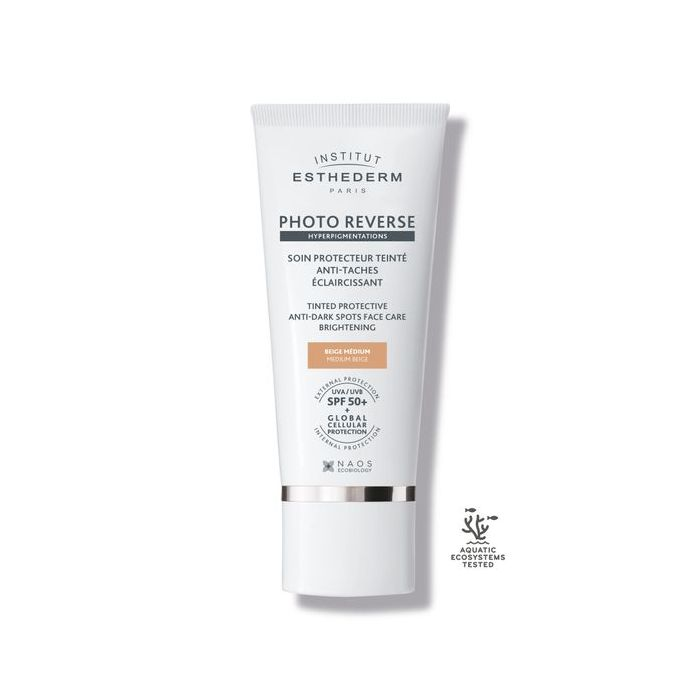
Sun protection is a cornerstone of dermatology, forming the foundation of preventive skincare, anti-ageing routines, and long-term skin cancer prevention. For dermatologists, skincare professionals, and skin therapists, understanding how UV radiation affects the skin and how sunscreen formulations work to block that damage is essential. Whether you specialise in cosmetic dermatology, clinical skincare, or aesthetic medicine, your patients rely on your guidance to choose the right sunscreen cream for daily use.
This article provides a deep scientific explanation of photoprotection, sunscreen filters, environmental exposure, and why premium sunscreens deliver superior results.
Understanding UV Radiation: What Professionals Must Know
The sun emits multiple forms of radiation, but only a few reach Earth and directly impact human skin.
1. UVA (320–400 nm)
- Penetrates deep into the dermis
- Causes photoaging
- Initiates free radical damage
- Linked to melanoma risk
- Present throughout the day, regardless of the weather
2. UVB (290–320 nm)
- Affects epidermis
- Causes sunburn
- Stimulates melanogenesis (tanning)
- Strongest between 10 a.m.–4 p.m.
- Responsible for most non-melanoma skin cancers
3. Infrared (IR) & Visible Light
Emerging research shows these wavelengths contribute to:
- Breakdown of collagen
- Thermal damage
- Pigmentation in darker skin types
- Chronic inflammation
This makes the case for advanced sunscreens with multi-layer protection.
How Sunscreen Works: The Biological Mechanism
A sunscreen cream protects skin using two major types of UV filters:
1. Physical (Mineral) Filters
- Zinc oxide
- Titanium dioxide
2. Chemical (Organic) Filters
Common filters include:
- Avobenzone
- Octocrylene
- Ethylhexyl methoxycinnamate
- Tinosorb S/M (modern broad-spectrum filters)
The Importance of Broad-Spectrum Coverage
Dermatologists emphasise “broad-spectrum” because it ensures protection against:
- UVA ageing rays
- UVB burning rays
- Infrared radiation
- Visible blue light
Premium sunscreens incorporate antioxidants and additional filters that combat environmental aggressors, offering more comprehensive photoprotection.
Why Premium Sunscreens Outperform Drugstore Formulas
Professional-grade and luxury sunscreens offer benefits particularly relevant for dermatology practices:
1. Photostable Filters
Many standard filters degrade in sunlight. High-end sunscreens use stabilisers to maintain SPF effectiveness for hours.
2. Anti-Ageing Ingredients
Modern dermatological sunscreen creams often include:
- Peptides
- DNA-repair enzymes
- Hyaluronic acid
- Niacinamide
- Antioxidants
This creates a synergy between protection and treatment.
3. High Cosmetic Elegance
Better patient compliance depends on texture. Patients tend to use sunscreen more consistently if the formula:
- Feels lightweight
- Absorbs quickly
- Does not leave a white cast
- Works under makeup
- Feels comfortable for oily or sensitive skin
4. Tailored Formulations
Dermatology-grade sunscreens cater to:
- Acne-prone skin
- Pigmentation-prone skin
- Rosacea
- Mature skin
- Sensitive skin
- Post-treatment skin (lasers, peels, microneedling)
Environmental Conditions Matter
Professionals must evaluate a patient’s lifestyle:
Urban Exposure
Pollution + UV accelerates oxidative damage → requires antioxidant-rich SPF.
Outdoor Workers
Need water-resistant and sweat-resistant formulas.
Tropical Climates
Higher UV index → higher SPF, stable filters.
Post-procedure Patients
Require mineral-only sunscreens to avoid irritation.
Key Parameters of a High-Quality Sunscreen Cream
When recommending SPF, dermatologists evaluate:
1. SPF & PPD Ratings
- SPF: UVB protection
- PPD / PA+++: UVA protection
2. Photostability
Critical for effective sun protection.
3. Filter Type (Organic, Inorganic, Hybrid)
4. Water/Sweat Resistance
5. Suitability for Skin Condition
Sunscreen Application Guidelines for Optimal Protection
Dermatologists commonly teach:
- Apply 2 mg/cm²
- Reapply every 2 hours
- Apply 15–20 minutes before sun exposure (for chemical filters)
- Use post-treatment daily
- Layer under makeup without compromising texture
Application density heavily influences real-world SPF performance.
Why Institut Esthederm Leads in Professional Sun Care Innovation
Institut Esthederm’s sun care technology focuses on cellular protection, preserving skin health while minimising photoaging. Their sunscreens:
- Protect DNA integrity
- Prevent photoaging at a cellular level
- Offer photostable filters
- Provide comfortable, luxurious textures for daily use
- They are suitable for sensitive, reactive, or mature skin
Conclusion
For dermatologists and skincare professionals, recommending an effective sunscreen cream is one of the most impactful skincare decisions. High-quality sunscreens prevent visible ageing, protect against environmental stress, and support long-term skin health. By selecting advanced, dermatology-grade formulations, practitioners can ensure patient compliance, better outcomes, and healthier skin.
